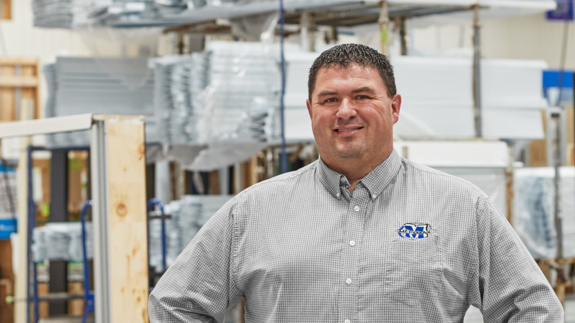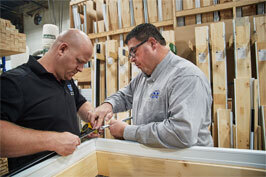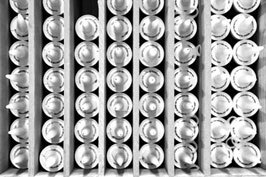How operational efficiency helped this manufacturer grow

Despite substantial investments made to modernize its equipment over the years, Les Industries Mélymax found itself at a pivotal moment in the spring of 2015. The company, a high-end steel door manufacturer for the residential sector located, since 2004, in Joliette, Quebec, was cramped for space and needed to relocate.
“Our sales figures had doubled since the launch of our new line of doors in 2013, and we had also been approached by a new client, but we couldn’t meet its needs in the facilities we had,” says owner Stéphane Asselin. “We had to move so that we could keep on growing.”
Evaluating efficiency
Asselin reached out to BDC, which would finance his relocation project in partnership with Caisse Desjardins. The loan, however, was for a considerable amount, which would have a negative impact on the company’s financial ratios.
At the suggestion of his BDC account manager, Asselin agreed to have his operations evaluated by the Bank’s advisory services team, which included operational efficiency experts. “The evaluation would help us see whether we could improve efficiency and cost-effectiveness in our existing facilities and be able to stay there, or whether we really had to move,” he added. “I was ready to ask myself some tough questions about moving, even though we had already overhauled the plant in 2013 and thought we were performing very well,” he says.
Important discoveries
BDC’s report came as a big surprise to Asselin: A whopping 60% of Mélymax’s manufacturing operations were non-value-added activities. That is to say, for each hour of production, only 15 minutes were dedicated to activities worth doing. There were several reasons for this situation, including decentralized procurement, inefficient manufacturing spaces and too much walking back and forth. In addition, there was no doubt that the lack of space in the plant was a major factor limiting the company’s ability to improve its efficiency and to grow.
Major gains possible
The report did, however, show that the company could achieve major gains by improving its operational efficiency and by moving to a bigger space that was better laid out. The experts believed that it was possible for the company to increase its productivity by 15%, decrease the cost of raw materials by 1%, and increase its gross margin by 3%.
The evaluation ended up convincing Asselin to relocate: “The potential was enormous and I realized that we would be able to make tremendous progress if we moved,” he says. “The evaluation also convinced our lenders of our potential to save and to be efficient and cost-effective,” he added. And so the entrepreneur was able to get the funds he needed to purchase a new building thanks to the pari passu financing offered by BDC and Caisse Desjardins.


Optimizing layout
Asselin also used BDC’s advisory services to help the company plan the layout of the new location and to optimize the logistical processes. From April to August 2016, BDC advisors helped Les Industries Mélymax implement the three components of continuous improvement: the fundamentals of efficient supervision, workstation organization (5S methodology), and performance dashboard implementation. The BDC team also helped the manufacturer lay out his new space, which was a demanding but also rewarding exercise: “They had us think about the ideal location for each machine to keep the amount of walking back and forth to a minimum and to make gains in time and efficiency,” says Asselin.
At first, our employees were reticent about changing the system. Today, no one wants to go back to the way things were.
Stéphane Asselin
Owner, Les Industries Mélymax
Getting the employees involved
During this process, each plant employee was able to give their opinion as to the best way to set up their workstation. Asselin admits that this approach undoubtedly slowed the process down, but paid off in the end: “At first, our employees were reticent about changing the system. Today, no one wants to go back to the way things were. There is a lot less overtime and pressure, and the atmosphere in the plant has improved,” he says.
The company also implemented an approach based on best lean manufacturing practices. These practices are particularly helpful in preventing the creation of bottlenecks. “This is what was happening in the plant before, and the employees were having trouble delivering the merchandise at the end of the day,” explains Asselin. “Today, we have become super efficient. Not only are we no longer having a hard time getting the merchandise out each day, but we’re now even getting a head start on the doors we have to deliver the next day.”